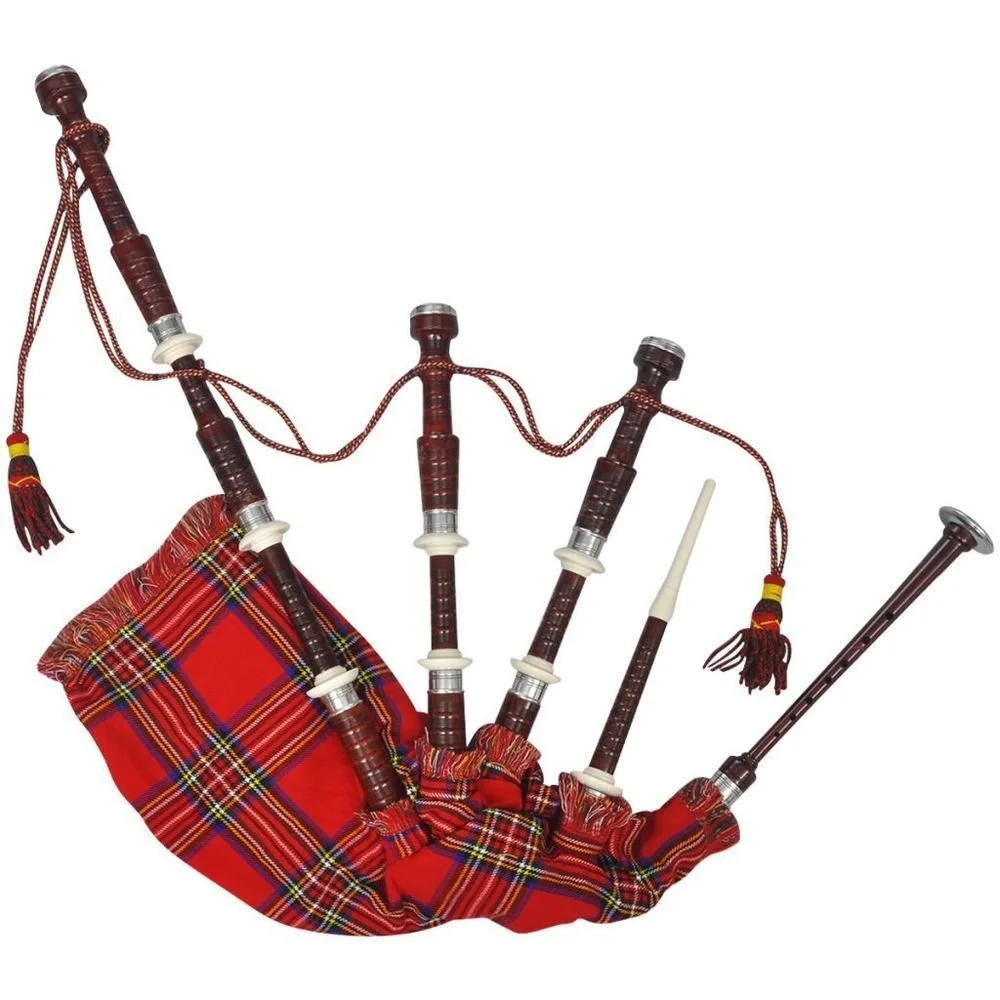The Scottish Great Highland Bagpipe
The bagpipe has a long history and has appeared in various forms in many cultures. It originated from the Middle East and gradually travelled to Europe. The “Oxford History of Music” discusses the oldest bagpipe found on a Hittite sculpture at Euyuk (modern day Turkey) from 1,000 B.C. There are also mentions of the bagpipe in the Bible. It has evolved with time as there are more than thirty different kinds of bagpipes around the world, including the Spanish, French, Italian, German, Hungarian, Czech, Tunisian, Indian, and Greek bagpipes.
The Scottish bagpipe, which is also known as the Great Highland Bagpipe, is perhaps the world’s most famous bagpipe. The exact time of the bagpipe’s first appearance in Scotland is uncertain, but records of the 1396 Battle of the North Inch describe sounds of the ‘warpipes’. Later, the Great Highland bagpipe was used during the expansion of the British Empire and the two world wars. The bagpipe’s sound can penetrate miles and help troops march with a steady tempo and high morale.
The Great Highland bagpipe is comprised of the following parts:
A blowpipe
Three drones at the top of the bag (2 tenor drones, 1 bass drone)
One chanter (melody pipe) with 8 holes to produce 9 notes. The pipers use their fingers to cover and uncover the holes to sound different notes
A bag (made of leather or synthetic material). The pipers use the blowpipe to inflate the bag, and the bag supplies the air into the drones and the chanter. When the pipers want to take a breath, they press the bag with the arm. This continuous supply of air makes the bagpipe music continuous.
tenor drones
bass drone
bag
The Great Highland bagpipe, with four reeds (two tenor drone reeds, one bass drone reed and one chanter reed), is classified as a woodwind instrument, but unlike the other woodwinds, the bagpipe’s reeds are all encased within the instrument, so the players can’t change the sound with mouth or tongue positioning.
Today, the bagpipe is Scotland’s national instrument and an important part of the Scottish culture. It is frequently played during military occasions and formal ceremonies.
“Danny Boy” Played on Bagpipe
chanter
Thank you for reading! See you next time!
Royal Regiment of Scotland 10th Anniversary Parade
blowpipe

